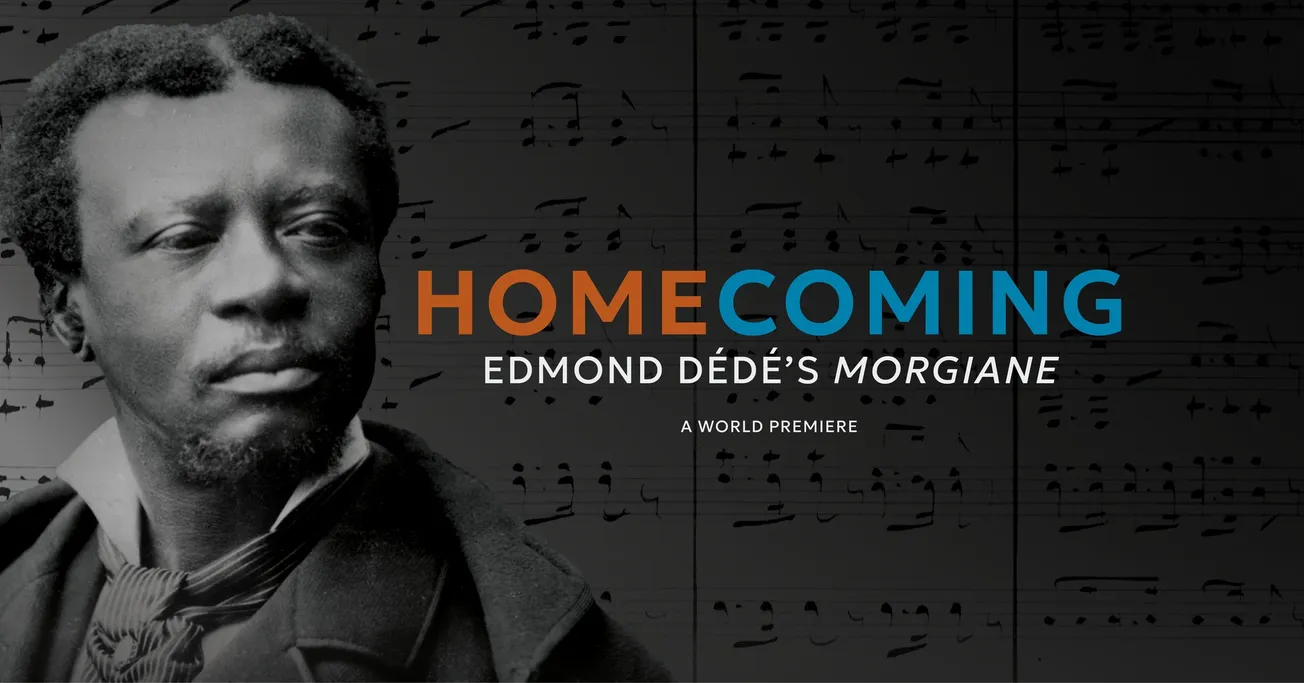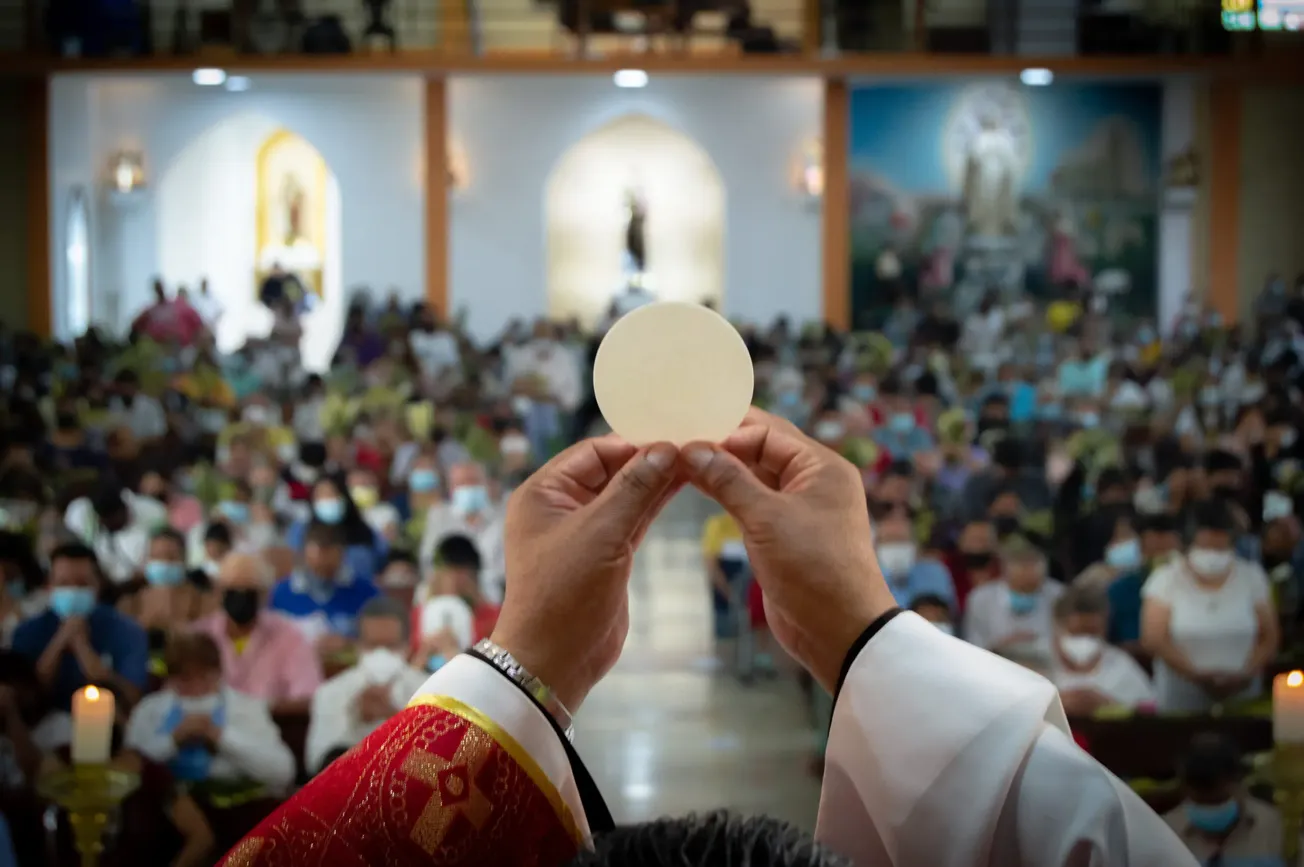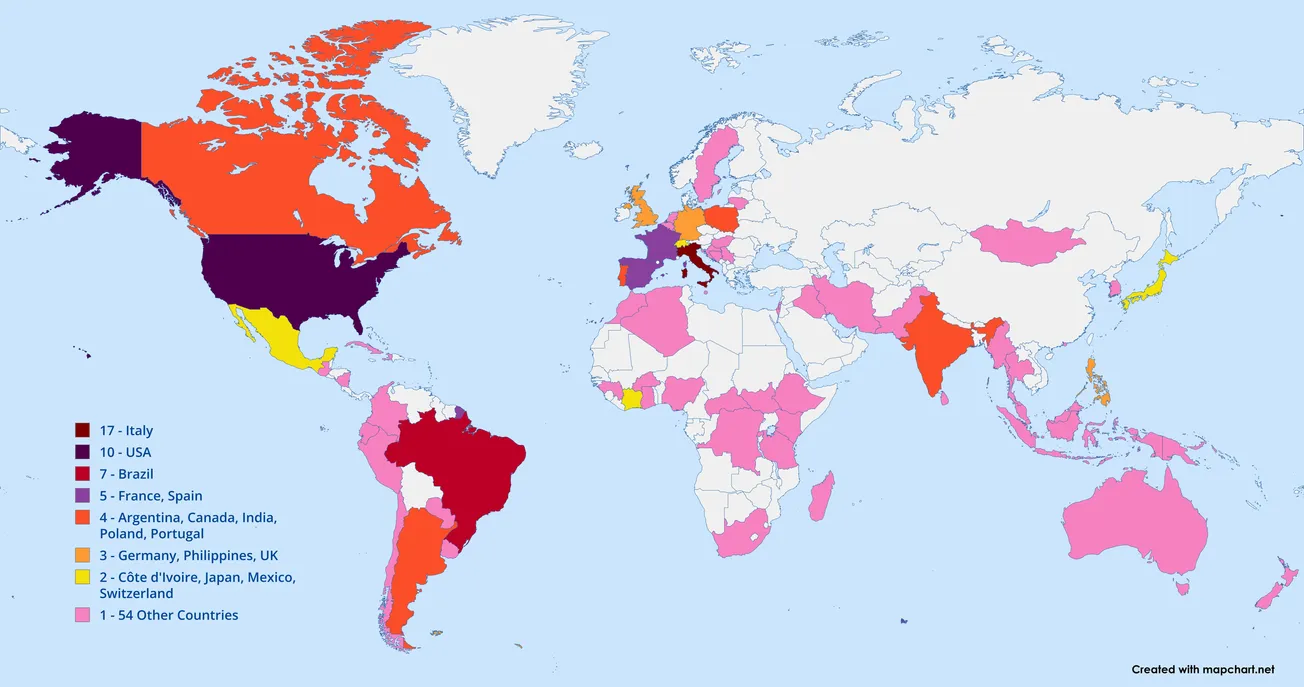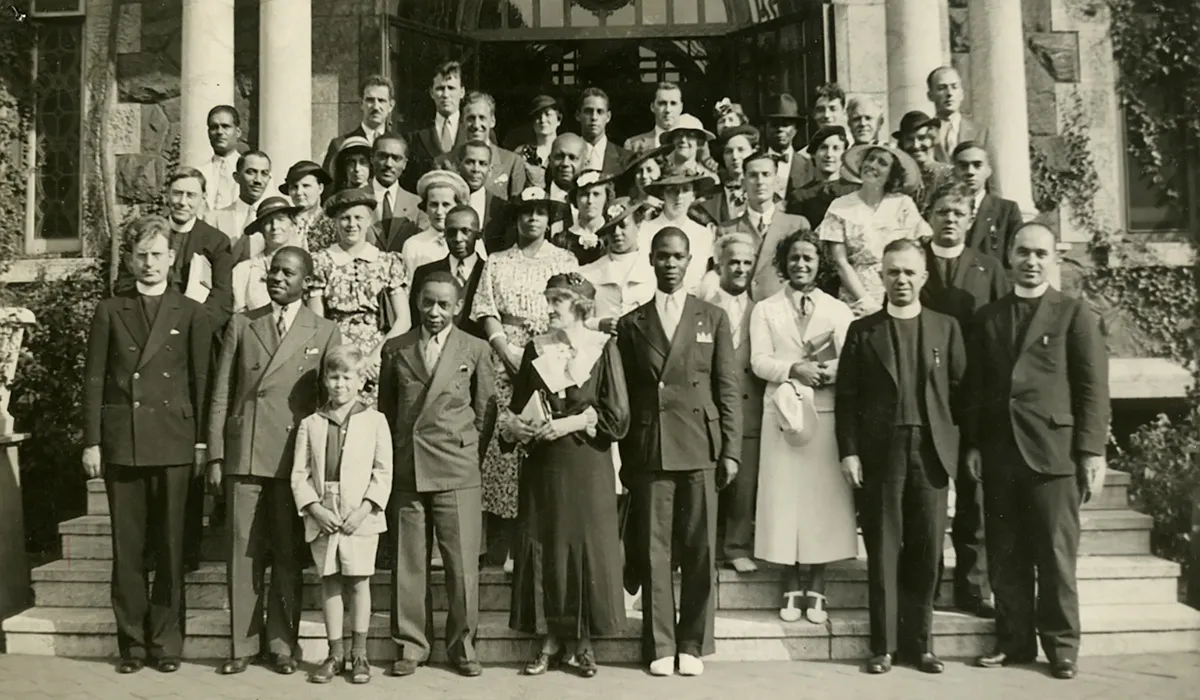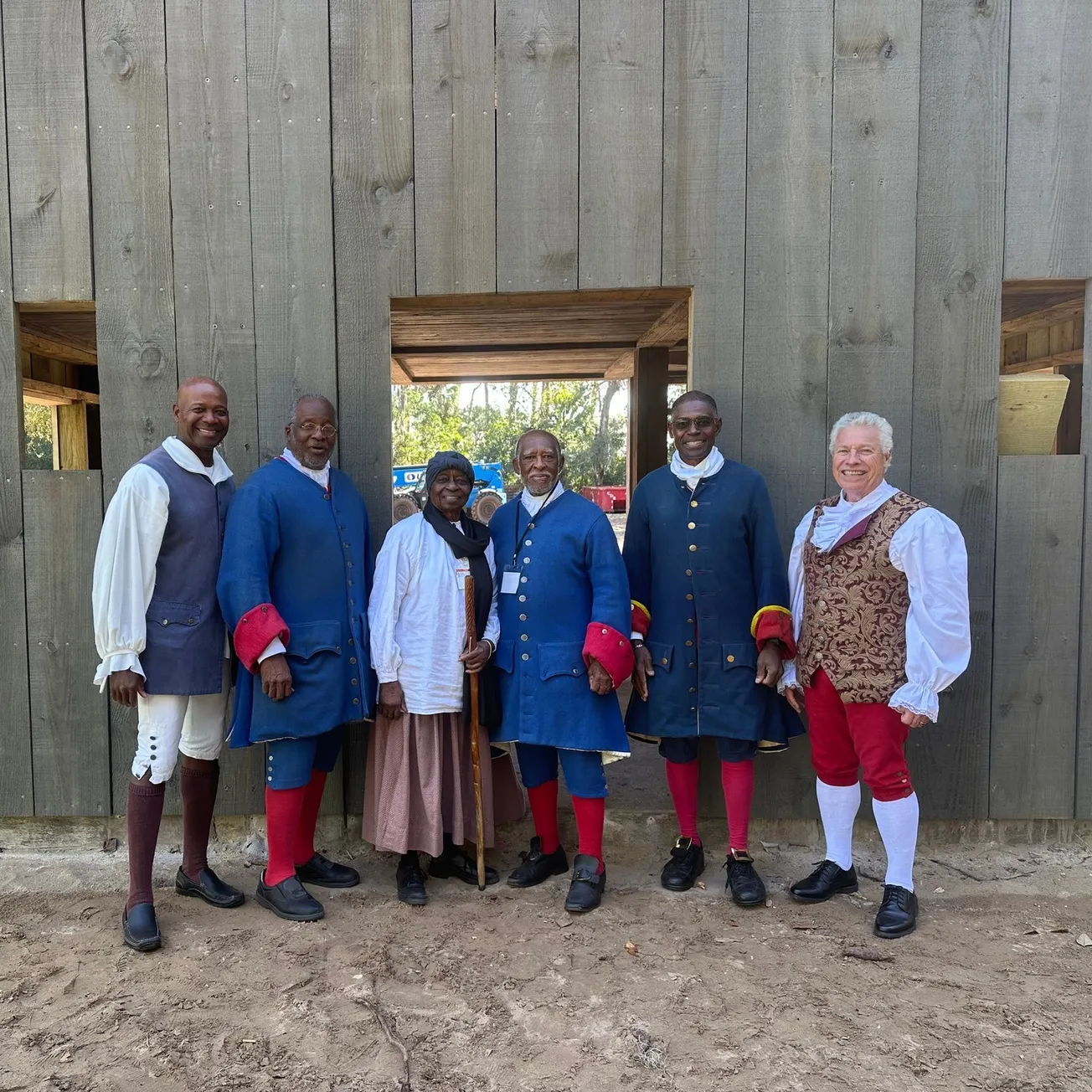In the Catholic tradition, today begins the liturgical season most appropriate for Christmas songs. Indeed, while many of us ceased hesitation the day after Thanksgiving, there is strong theological reasoning for reserving many carols and hymns until after Advent, during which we wait for the Son of God to come, rather than celebrate his birth explicitly.
On this fine Sunday morning, however, we’re free to have at it. The full barrel of auditory Christmas joy is upon us for the next two weeks, lasting until the feast of the Baptism of the Lord (on January 9 this year).
It’s no secret that much of the modern Christmas canon is of African-American origin—who better typifies the secular season than, say, Mariah Carey?—but one might be interested to know that several of the most popular traditional Christmas songs are also, in fact, indigenous Black music.
Among others, James Weldon Johnson and Frederick Douglass have written on the nature of Christmas celebrations among enslaved Americans, and noted that not all slaves participated (or were allowed to) and that many preferred to see Jesus as a liberating king than a helpless baby. Even so, a number of holiday classics broke through over time, most of which were recorded together in 1960 by the Black folk singer Odetta.
In that vein, I have for you today a rundown of the most popular among the Black Christmas carols and hymns, including a bit of history and a few of the best renditions.
“Go Tell It On the Mountain”
This is indeed one of the best-known Christmas carols in the English language, and—my up-to-date Black card notwithstanding—I had no idea it was a gospel song. Originally falling under the category of an African-American spiritual (songs first developed in the fields by enslaved Black persons), “Go Tell It” dates back to the time of the Civil War and was first compiled by the Black music historian John Wesley Work Jr. after the turn of the 20th century.
One of the more traditional versions of the tune is an a cappella rendering from the Moses Hogan Singers in 2007. One of my favorites, however, is Pentatonix’s cover on their 2014 Christmas album “That’s Christmas to Me.” A more adventurous take to consider is Gary Mayes & Nu Era’s version featuring perennial gospel songstress Kim Burrell.
“Children, Go Where I Send Thee”
This track I was unfamiliar with until my later adolescence, and some might say it isn’t a Christmas carol, per se, but it’s quite popular in the larger holiday canon nonetheless. A playful “cumulative” song evoking various Biblical scenes and epithets, it was first noted in 1934 as a riff on the English folk song “The Twelve Apostles” by Black work camp laborers in Georgia. It later developed into its more familiar Black spiritual structure in 1937 when it was recorded commercially and popularized by the all-Black Golden Gate Quartet.
My favorite version remains the first I ever heard, a Black gospel take from the Contemporary Christian Music (CCM) artist and “American Idol” finalist Mandisa. A jazzy rendition from Howard University’s a cappella group Afro Blue also made my personal Christmas playlist, and Servant of God Thea Bowman—perhaps the only Catholic saint-to-be with music on streaming—recorded a traditional version on her 1988 spirituals collection “Songs of My People.”
“Rise Up, Shepherd, and Follow”
Another Black spiritual, “Rise Up, Shepherd” follows a traditional call-and-response format calling attention to the bucolic scenes of the Gospel of Luke chapter 2, wherein a group of farmers are called to travel to Bethlehem to see the child-king Jesus. The song has been dated to perhaps as late as the Reconstruction Era, and the first-known rendering was a text version in 1891.
One of the most popular versions of this tune (and my go-to) is, ironically enough, from a Catholic in former (and the first Black) Miss America Vanessa Williams. Her version features a gospel choir and modern stylings, which fit the song quite well. The Queen of R&B, Mary J. Blige, gave the song a very welcome East Coast hip-hop take alongside fellow New Yorker Nas in 2013, on the soundtrack of “Black Nativity.”
“Jesus, Oh, What a Wonderful Child”
Traditionally titled “Glory to the Newborn King,” this song’s origins were once dated to the slavery era, but more recent research has shown that it is not present in any of the collections that define the Black spirituals genre. Also working against the theory is the song’s patently modern structure, akin to the advent of more contemporary gospel music rhythm and lyrics.
Indeed, instead of the antebellum era, the song’s genesis has since been identified with Margaret Allison and her Angelic Gospel Singers, a Pentecostal group who recorded the tune in 1952. The most popular version by far, however—and one of my favorite songs of any genre—is Mariah Carey’s 1994 rendition, the final track on “Merry Christmas,” one of the best-selling Christmas albums of all time. (Her cover also features an extended praise break in the final minute of the song, which seals the deal.) Servant of God Thea Bowman also recorded the song on her spirituals album, the song’s true origins notwithstanding.
“Amen”
Simply titled, this spiritual is one of the best-known overall, and doubly functions as a Christmas song in its fuller lyrical form recounting the life of Jesus from birth to resurrection. It is also used, in its shorter form, in some settings of the Mass—especially in Black Catholic parishes—as the “Great Amen” at end of the Eucharistic Prayer.
The song was greatly popularized during the Civil Rights Movement, when the Black composer Jester Hairston arranged it for “Lilies of the Field,” the 1963 film starring Sidney Poitier. In the narrative, his African-American Baptist character teaches the song during his extended encounter with a group of German nuns. The real-life Poitier, of course, was a Catholic-raised Afro-Bahamian. The film’s a cappella version of the song survives via the soundtrack, as does a lively cover from the similarly Catholic-raised Harry Belafonte.
“Mary’s (Little) Boy Child”
Hollywood songmaker Jester Hairston repeats on the list with this Christmas novelty, based on a tune he penned in 1952 as a (literal) party favor for a group of West Indians celebrating a friend’s birthday. The resulting Afro-Caribbean calypso rhythm was overlaid later with lyrics celebrating the birth of Christ, and a studio recording was released by—guess who?—Harry Belafonte in 1956, though with a markedly slowed tempo typical of many pop tunes at the time.
Though I can’t say I have a favorite version of the song, gospel music veteran Andraé Crouch recorded an exemplary cover for his 1999 Christmas album, featuring a solo from backup singer supreme Táta Vega. Mandisa’s powerful vocals buoy her 2012 version, which is also quite nice.
(Bonus) “Sweet Little Jesus Boy”
Full disclosure: despite popular conceptions, this song is not actually of Black origin. Not in authorship, anyway. Louisiana attorney Robert MacGimsey, a White man, penned the song in 1934 in the style of a Black spiritual, including African-American Vernacular English (AAVE) and lyrical themes typical of the genre (e.g., the suffering Jesus and a penitent first-person perspective). MacGimsey’s move was apparently effective, as the song has since become embedded in Black culture and in the larger Christmas psyche.
My go-to, now and always, is the classic 1991 cover by Take 6, a Grammy-winning Black a cappella group from the Seventh-day Adventist tradition. Black CCM artist Jamie Grace also recorded a stirring version in 2016, which first introduced me to the song. Warren Wolf, a Black jazz vibraphonist, also gave new energy to the song with his pandemic-era cover featuring Afro Blue’s signature vocalist Christie Dashiell.
I hope these songs successfully help you extend your Christmas celebrations well into the new year. Happy holidays!
Nate Tinner-Williams is co-founder and editor of Black Catholic Messenger, a seminarian with the Josephites, and a ThM student with the Institute for Black Catholic Studies at Xavier University of Louisiana (XULA).






